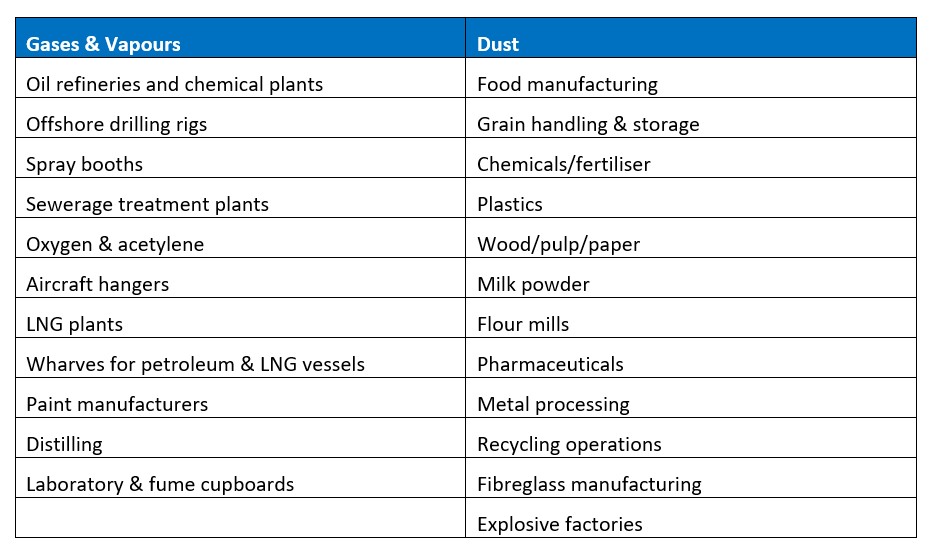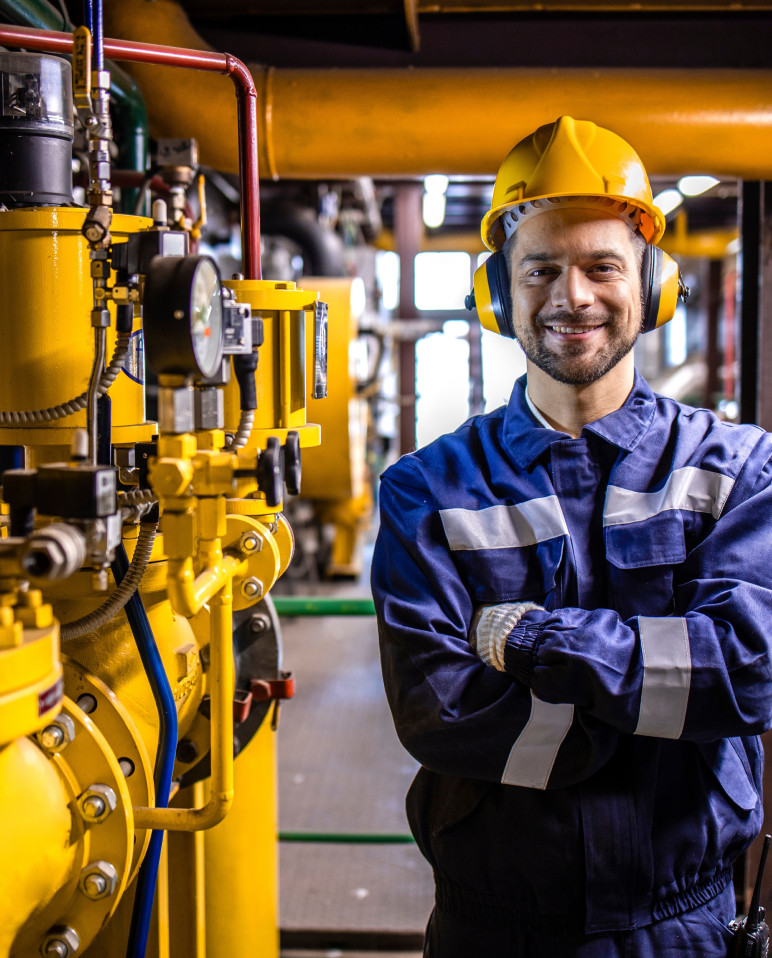Fascination About Roar Solutions
Fascination About Roar Solutions
Blog Article
The Ultimate Guide To Roar Solutions
Table of ContentsNot known Facts About Roar SolutionsThe smart Trick of Roar Solutions That Nobody is Talking AboutGet This Report about Roar Solutions
In order to shield setups from a potential explosion a technique of analysing and categorizing a potentially harmful location is needed. The objective of this is to ensure the proper selection and installment of equipment to ultimately stop an explosion and to guarantee safety and security of life.
(https://www.bitchute.com/channel/JJyNq2gAk2M7)
No devices needs to be set up where the surface temperature level of the equipment is higher than the ignition temperature level of the given danger. Below are some usual dust harmful and their minimal ignition temperature level. Coal Dust 380C 225C Polythene 420C (thaws) Methyl Cellulose 420C 320C Starch 460C 435C Flour 490C 340C Sugar 490C 460C Grain Dust 510C 300C Phenolic Resin 530C > 450C Aluminium 590C > 450C PVC 700C > 450C Residue 810C 570C The possibility of the threat existing in a focus high adequate to cause an ignition will certainly vary from place to place.
In order to identify this danger an installment is split into areas of danger relying on the quantity of time the unsafe exists. These locations are described as Zones. For gases and vapours and dirts and fibres there are 3 zones. Area 0 Area 20 An unsafe atmosphere is highly most likely to be present and may be present for long periods of time (> 1000 hours per year) or even continuously Area 1 Area 21 An unsafe atmosphere is feasible however not likely to be existing for extended periods of time (> 10 450 C [842 F] A classification of T6 indicates the minimum ignition temperature level is > 85 C [185 F] Unsafe location electric devices possibly developed for usage in greater ambient temperature levels. This would certainly showed on the score plate e.g. EExe II C T3 Ta + 60C( This means at 60C ambient T3 will not be surpassed) T1 T1, T2, T3, T4, T5, T6 T2 T2, T3, T4, T5, T6 T3 T3, T4, T5, T6 T4 T4, T5, T6 T5 T5, T6 T6 T6 A T Class rating of T1 means the maximum surface temperature generated by the instrument at 40 C is 450 C. Thinking the connected T Class and Temperature level rating for the equipment are proper for the location, you can constantly utilize an instrument with a more rigid Division ranking than required for the area. There isn't a clear answer to this question however. It actually does rely on the sort of devices and what repair services need to be executed. Devices with details test treatments that can't be performed in the field in order to achieve/maintain 3rd party rating. Need to return to the manufacturing facility if it is before the equipment's solution. Field Repair Work By Authorised Worker: Complex testing may not be needed nonetheless particular procedures may require to be followed in order for the equipment to maintain its 3rd party score. Authorized personnel additional hints have to be utilized to do the job correctly Repair work must be a like for like replacement. New element have to be considered as a straight replacement needing no special testing of the devices after the repair is complete. Each piece of equipment with a hazardous rating must be assessed individually. These are described at a high level below, but also for even more in-depth details, please refer directly to the guidelines.
Everything about Roar Solutions
The devices register is a detailed database of equipment documents that includes a minimum set of areas to determine each item's location, technological specifications, Ex lover classification, age, and ecological information. The ratio of Detailed to Shut assessments will be identified by the Equipment Threat, which is examined based on ignition danger (the possibility of a source of ignition versus the possibility of a flammable environment )and the dangerous location classification
( Zone 0Area 1, or 2). Executing a durable Risk-Based Assessment( RBI )technique is crucial for making certain compliance and safety in handling Electrical Tools in Hazardous Areas( EEHA).
Some Known Details About Roar Solutions

In terms of eruptive risk, a hazardous area is an environment in which an eruptive environment is existing (or might be anticipated to be existing) in amounts that call for special preventative measures for the building, installation and use of devices. eeha training. In this write-up we explore the obstacles dealt with in the workplace, the risk control measures, and the called for competencies to function securely
It issues of modern-day life that we manufacture, save or handle a variety of gases or liquids that are considered combustible, and a series of dirts that are deemed flammable. These materials can, in certain conditions, create explosive ambiences and these can have significant and awful consequences. Many of us recognize with the fire triangle eliminate any kind of one of the 3 elements and the fire can not happen, yet what does this mean in the context of unsafe locations? When damaging this down into its most basic terms it is essentially: a combination of a specific amount of launch or leakage of a particular substance or material, blending with ambient oxygen, and the presence of a source of ignition.
In many circumstances, we can do little regarding the degrees of oxygen airborne, yet we can have substantial impact on sources of ignition, for example electrical tools. Harmful areas are documented on the hazardous location classification illustration and are identified on-site by the triangular "EX-SPOUSE" indication. Right here, amongst other essential info, zones are split right into 3 kinds relying on the threat, the likelihood and period that an explosive atmosphere will exist; Area 0 or 20 is regarded one of the most dangerous and Zone 2 or 22 is considered the least.
Report this page